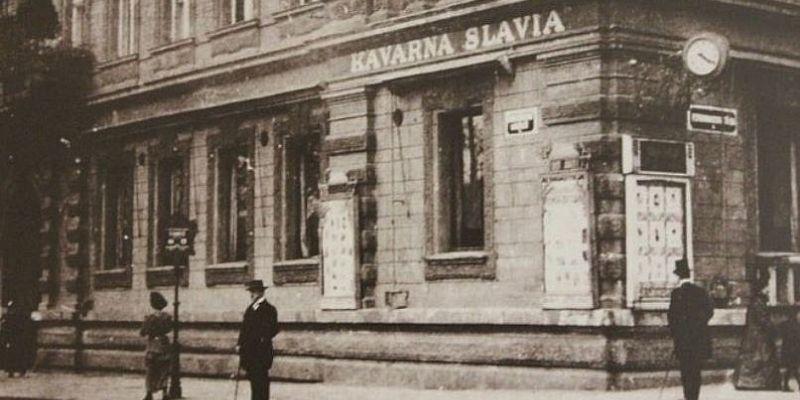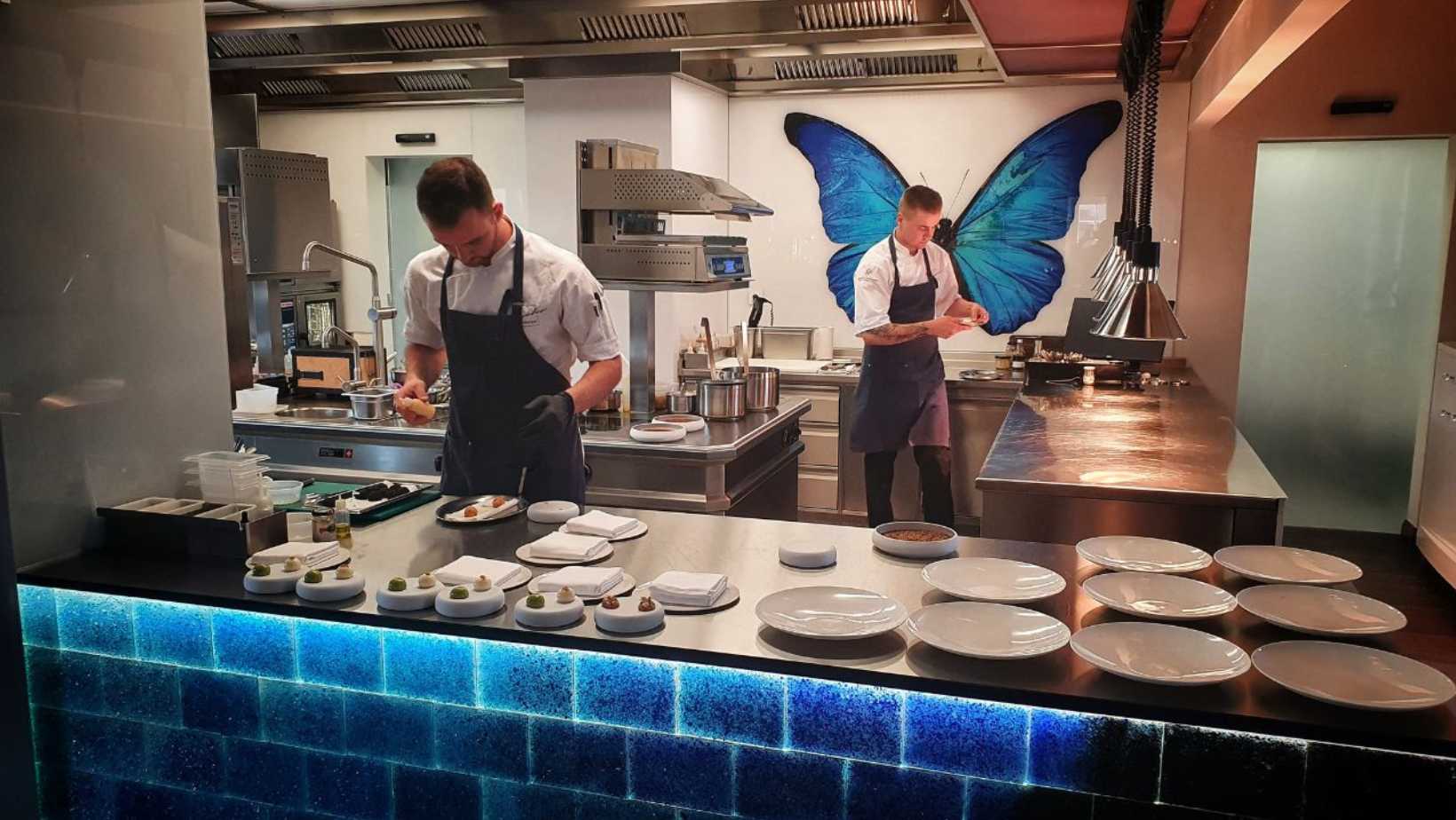During the First Czechoslovakia Republic, artists, patriots, merchants of industry, and the affluent all flocked to Prague which became the country’s cultural hub.
It was in the city’s many cafes that the artists, poets, writers, and journalists would gather.
For artistically inclined Praguers, the Slavia Café became a local favorite where creatives could converge and enjoy riverfront views.
The wealthy elites would also find themselves at Slavia and enjoy close proximity to the National Theater. The era of the first republic is often referred to as the golden age despite the vast wage gap between the affluent and the poor working class. Café Slavia was named for the Slavic pride of its founders and still stands to this day.
Situated on Wenceslas Square is Café Evropa nestled within the Grand Evropa Hotel. The Art-Nouveau décor at Café Evropa harkens back to its opening in 1889. It is said that the hotel’s café and restaurant are believed to be the inspiration of the dining room in James Cameron’s classic film Titanic.
It was during this era that Parisian coffee grew in popularity and Café Louvre became the go-to spot for the affluent to gather. The café featured a games room with billiards tables and private club rooms for those who could afford it. Café Louvre was a favorite for notables like Franz Kafka and Albert Einstein in their day.
Café Montmartre which opened in 1911, was also frequented by novelists like Kafka, Max Brod, and Jaroslav Hašek. The café still stands today inside a building referred to only as U třech divých (house at the three savages). Although it is still centrally located, it gets less tourist attention than cafes like Slavia.
At the beginning of the First Republic, another popular haunt for locals was the Grand Café Orient and is said to have been the only Cubist café in the world. Forced to close in the 1920’s the café reopened in 2005 and honored the original cubist design concept paying homage to architect Josef Gočár. The building in which Grand Café Orient sits is known as the House of the Black Madonna currently serving as the Czech Museum of Cubism.
This “Golden Age” of cafes during the first republic continues to live on as efforts are taken to restore and maintain these beloved and culturally rich historical sites.
Even as a global pandemic plagues the city, Prague’s residents look for a to return to the old days. The public has every intention to continue upholding its longstanding tradition of finding like-minded and gathering over a cup of coffee.
-
NEWSLETTER
Subscribe for our daily news











